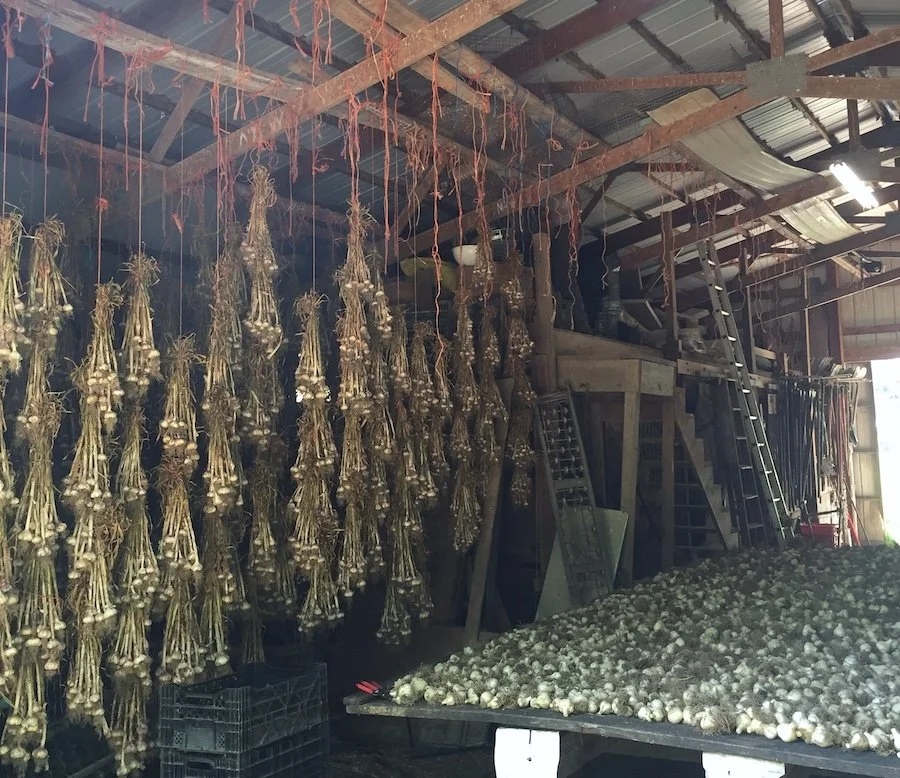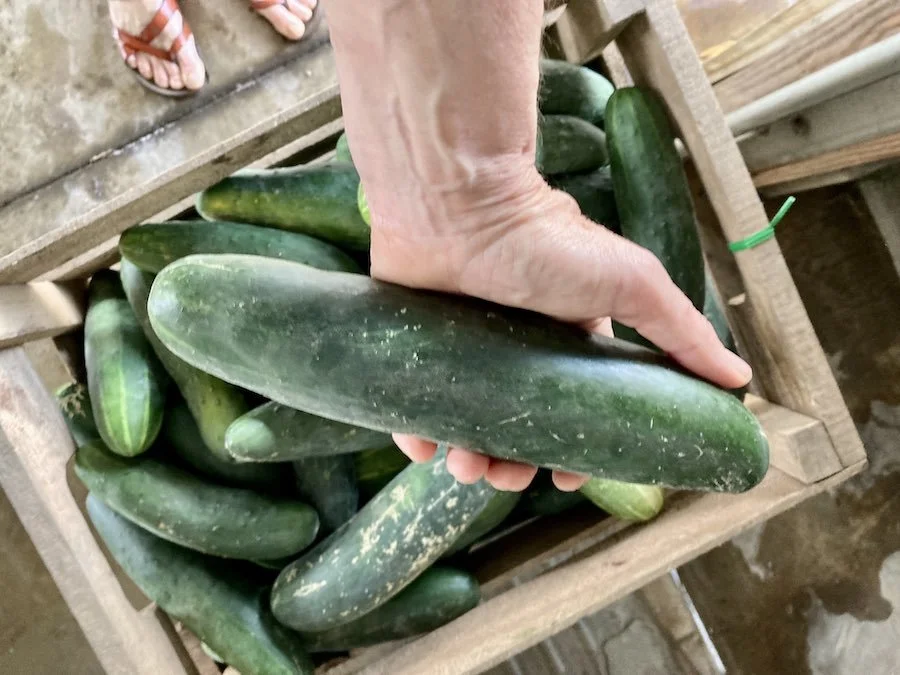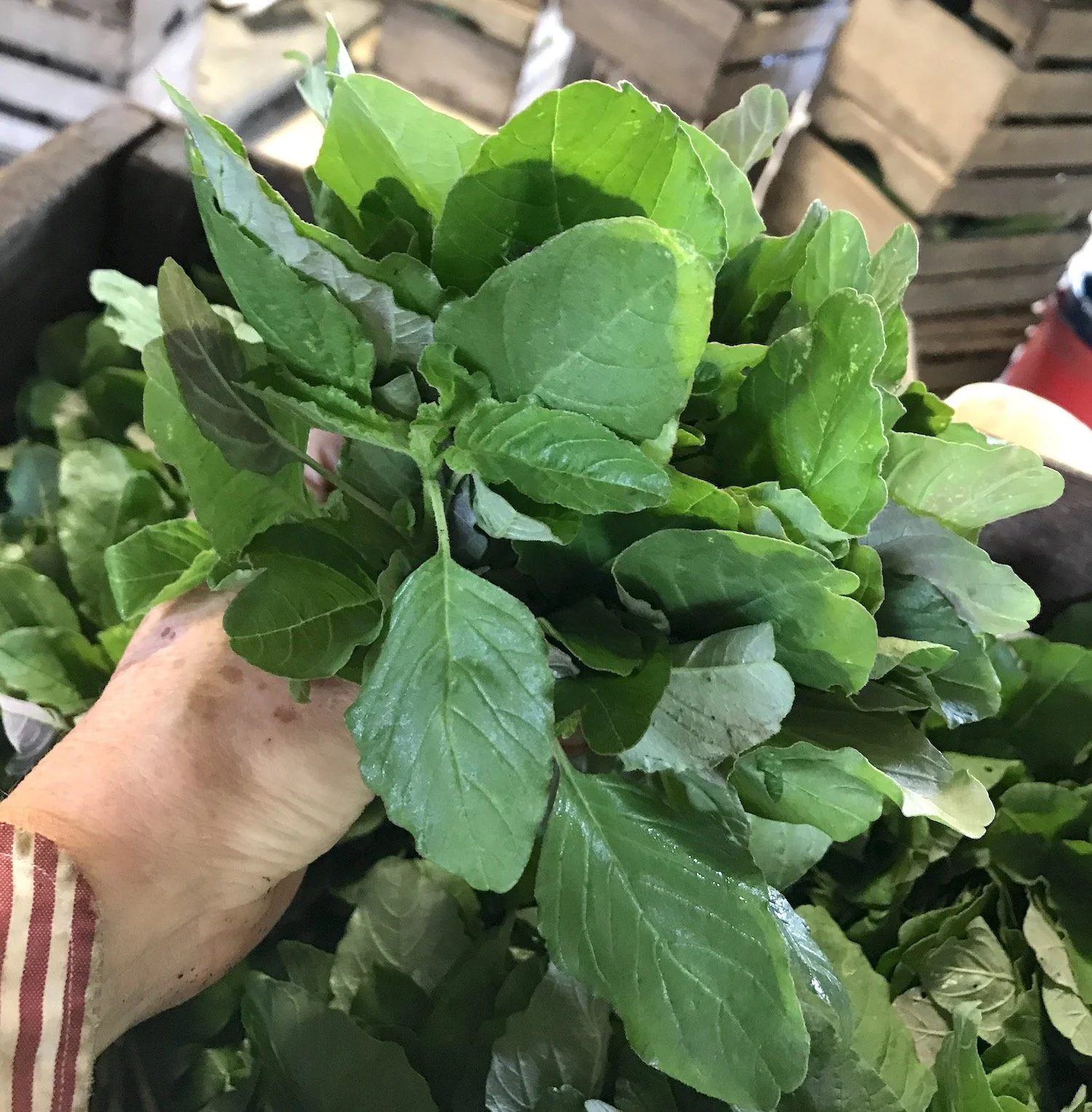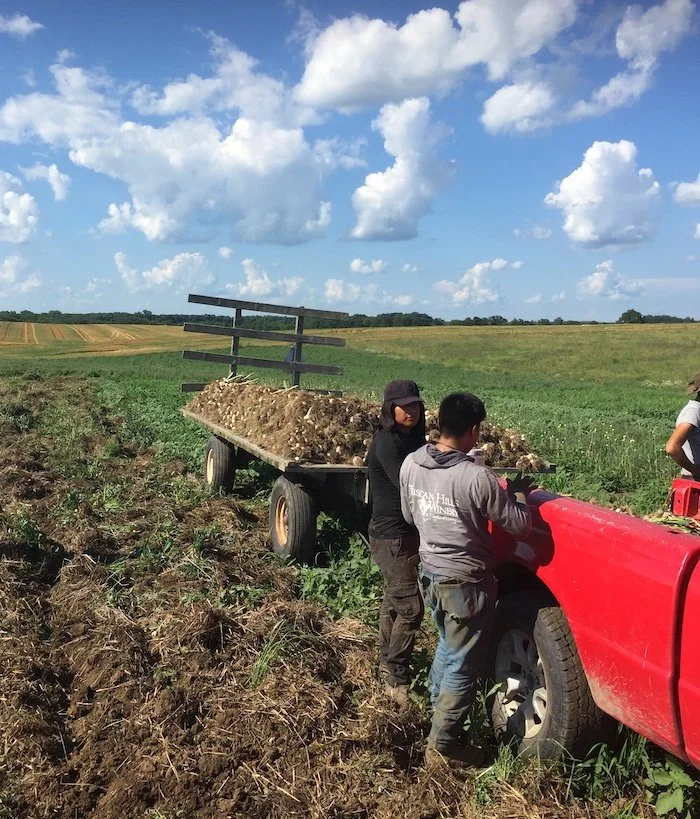Market Notes for July 12, 2025
This has been the week of Henry’s Great Garlic Harvest, and the barn is now full of all the different varieties from the 2025 garlic crop, some of which you will see at the market this week!
Before we get into this week’s Food & Farm News, Henry has a few requests:
1) Please bring him any CLEAN 1-gallon plastic jugs you may have. He will use these to start making his own ice instead of purchasing it. Henry does not have a refrigerated truck, so he creates a “refrigerated” section by stacking crates of vegetables that like to be cool and wet (think lettuce, broccoli, herbs, and other greens) and tops the stack with a crate of ice that slowly melts and drips down during the trip to Evanston in the wee hours of Saturday morning. He tarps off that section, and then has the rest of the truck for vegetables that want to be dry and warm, e.g. tomatoes and potatoes.
2) If you haven’t been able to come to our October Farm Tours, Henry invites you to come to The Land Connection’s Tour of Henry’s Farm on Monday Aug. 4.
3) While you’re looking at your calendar, mark Saturday Oct. 4, the date of our Annual Farm Tour and Festivities.
Food & Farm Notes
We are in a little bit of a lull this week — in between the spring and early summer crops, and the soon-to-come high-summer crops. But even during a “lull,” there are many great vegetables coming to market. Here are a few to be sure and grab!
FIRSTS of the Season
CUCUMBERS - both the “regular” American slicers, and the Indian Poona Keera. Don’t let the bronze skin of the Poona Keera fool you — they are not over-mature, but perfectly ripe, juicy, and delicious!
HEIRLOOM BEANS - both the heirloom Dragon Tongue Beans, and Henry’s variety of Roma (Italian Flat Beans)
TOMATOES and CHERRY TOMATOES - just a smattering, Henry says, and you won’t see them unless you come super-early. But they are definitely on the way, and you’ll see more and more each week!
DON’T MISS OUT ON:
ONIONS and SHALLOTS, including the super-sweet Walla Wallas above. Henry doesn’t grow enough onions to have dry ones for you throughout the season, so stock up on your favorite varieties now, and store them in the fridge or out on your counter to use in the coming weeks and months.
MORE FENNEL! Henry thanks you for taking home all of the big planting of fennel he brought to the market last week, but the next planting is ready now, so you’ll see more big, beautiful bulbs.
BEETS
CARROTS
SUMMER SQUASHES
and of course, freshly-harested GARLIC!
This is a bunch of Amaranth Greens from earlier in the season, and the bunches you see at the market this week will be bigger.
Food Notes: WILD GREENS, including AMARANTH & PURSLANE
Even though lettuce season is over until the fall, and even though the deer ate pretty much all of the Chard, Nature provides us with an abundance of wild greens. Since I mentioned Purslane last week (high in omega-3s, and great either raw in salads, or sauteed with eggs or other greens), we’ll talk about Amaranth this week, and I urge you to give it a try because to my mind it’s even better than spinach or chard because of its deep, rich flavors.
Although it is known to most Midwestern farmers as pigweed, and ruthlessly poisoned with herbicides, the tender leaves of Amaranth are a valued food all over the world, from Asia to the Himalayas to North and South America and the Caribbean. In China, tender young amaranth leaves are used as a stir-fry vegetable called yin choi. In the Caribbean it is known as callaloo, and used in delicious soups and sautees.
Although the stems are large, they cook down nicely, and there's no need to strip the leaves from the stems. Just chop the stems and leaves roughly, and then use amaranth in your favorite dishes that call for cooked spinach. (True Saag Paneer is made with wild amaranth greens!) And you can use amaranth in quiche, lasagna, or on its own as in this simple and delicious recipe:
SAUTEED AMARANTH
1 Tb olive oil
2 onions, chopped
1 tablespoon minced garlic
1/2 cup chicken or vegetable broth
1 pound Amaranth greens and stems, washed, rinsed and sliced
Salt and pepper to taste
In a large skillet, heat the olive oil, and then add the onions, and cook until soft. Add the garlic and cook another minute. Then add the broth and bring to a simmer. Add the greens, in batches if needed. Cook until soft, stirring often. Season to taste and serve.
NUTRITIONAL HIGHLIGHTS: Like most native plants, amaranth is rich in vitamins and minerals, including vitamins A, B6, C, riboflavin and folate, as well as calcium, iron, magnesium, phosphorus, potassium, zinc, copper and manganese.





